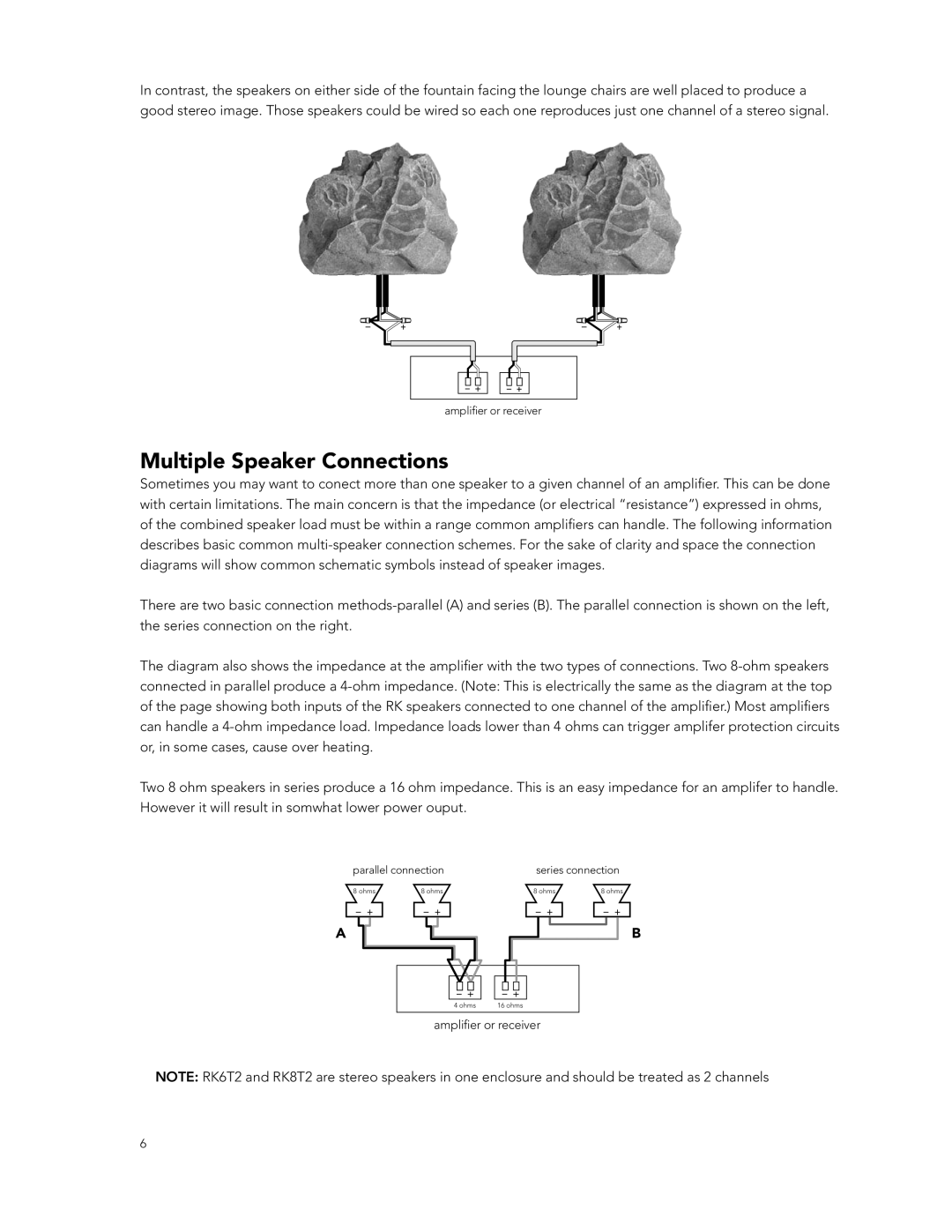
In contrast, the speakers on either side of the fountain facing the lounge chairs are well placed to produce a good stereo image. Those speakers could be wired so each one reproduces just one channel of a stereo signal.
>«wiÀÊÀÊÀiViÛiÀ
Multiple Speaker Connections
Sometimes you may want to conect more than one speaker to a given channel of an amplifier. This can be done with certain limitations. The main concern is that the impedance (or electrical “resistance”) expressed in ohms, of the combined speaker load must be within a range common amplifiers can handle. The following information describes basic common
There are two basic connection
The diagram also shows the impedance at the amplifier with the two types of connections. Two
Two 8 ohm speakers in series produce a 16 ohm impedance. This is an easy impedance for an amplifer to handle. However it will result in somwhat lower power ouput.
«>À>iÊViVÌÃiÀiÃÊViVÌ
nÊ Ã | nÊ Ã | nÊ Ã | nÊ Ã |
A
B
{Ê Ã £ÈÊ Ã
>«wiÀÊÀÊÀiViÛiÀ
NOTE: RK6T2 and RK8T2 are stereo speakers in one enclosure and should be treated as 2 channels
